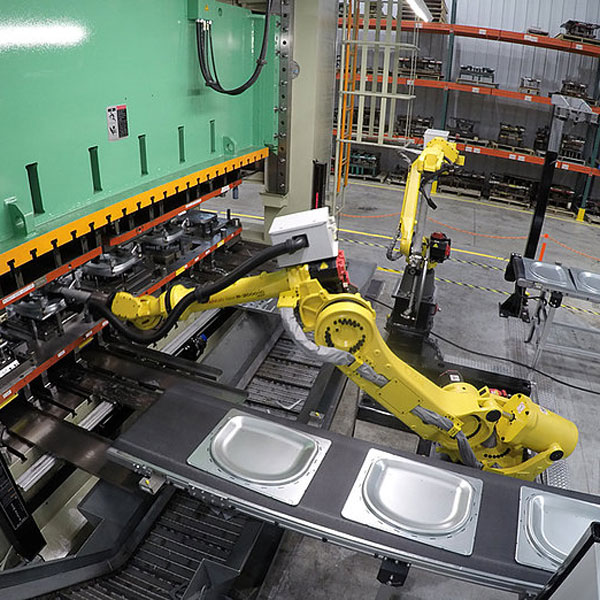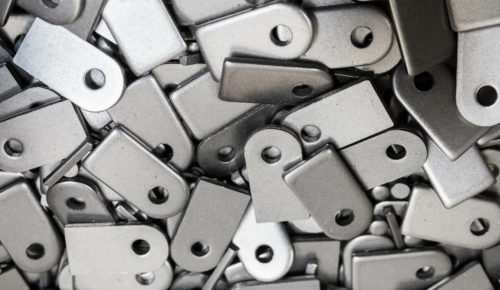Releasing the Prospective of Steel Stamping: Professional Tips and Ideal Practices Exposed
In the world of steel marking, where accuracy and effectiveness reign supreme, the mission to enhance procedures and unlock surprise capacities is a perpetual quest. Expertise sharpened over years of sector experience, combined with advanced technologies and cutting-edge practices, holds the vital to accomplishing exceptional outcomes. As we navigate via the intricate globe of steel marking, a better look at the details of tooling design, product option, manufacturing efficiency, high quality control, and arising patterns promises a treasure of understandings waiting to be unearthed. Remain tuned to discover how these professional tips and ideal practices can reinvent the metal marking landscape.
Tooling Layout Optimization
Enhancing tooling layout is vital for boosting effectiveness and precision in steel stamping procedures. A well-balanced tooling style can considerably affect the quality and cost-effectiveness of steel marking procedures. By very carefully taking into consideration aspects such as product option, die configuration, and part geometry, producers can improve production processes and improve total product quality.
One key element of tooling style optimization is choosing the most ideal materials for the passes away and punches used in the stamping process. Appropriate die layout can help prevent problems such as wrinkling, tearing, and excessive springback, leading to higher production returns and decreased scrap prices.
Furthermore, maximizing component geometry via tooling design can help minimize material waste and manufacturing time. By very carefully forming punches and passes away to match the preferred component requirements, suppliers can accomplish tighter tolerances and boosted component quality. On the whole, investing time and resources in maximizing tooling design can result in significant long-term advantages for steel stamping procedures.

Material Option Approaches
Strategically picking materials for steel marking tooling is paramount for making certain longevity and performance in making processes. When choosing materials for steel marking applications, several crucial variables should be considered.
An additional crucial variable in product choice is the predicted production volume - Metal Stamping. For high-volume production runs, tooling materials with premium wear resistance and durability, such as device steels or carbide, are frequently favored to endure the roughness of continuous stamping procedures
In addition, the complexity of the stamping layout and the required accuracy also play a considerable duty in product option. For detailed stamping patterns or limited tolerances, products with high thermal conductivity and outstanding machinability, like beryllium copper or tool steel alloys, might be better to attain the desired results.
Manufacturing Efficiency Methods
To enhance making result and reduce manufacturing expenses, carrying out reliable methods in metal stamping procedures is critical. Automated metal stamping devices can perform jobs with accuracy, consistency, and at a much faster rate than hand-operated labor, leading to boosted efficiency and minimized cycle times.
Another technique to read review boost production effectiveness is via continual process improvement. Conducting routine audits and efficiency evaluations can help identify traffic jams, ineffectiveness, and locations for enhancement within the metal stamping process. By analyzing data and feedback from these examinations, suppliers can execute targeted solutions to streamline operations, boost throughput, and maximize general efficiency.
Furthermore, taking on lean manufacturing concepts, such as five methodology and Kanban systems, can assist get rid of waste, boost process, and enhance general productivity in metal stamping operations. By promoting a society of continual renovation and encouraging staff members to contribute ideas for efficiency gains, makers can unlock the full capacity of their metal stamping processes.
Quality Assurance Procedures
Structure on the foundation of reliable manufacturing strategies in steel stamping processes, making certain stringent quality control actions is critical for keeping product standards and consumer fulfillment. Quality control in steel stamping includes systematic evaluation, testing, and surveillance of the production refines to recognize and rectify any inconsistencies or problems that could endanger the end product's integrity (Metal Stamping). Applying steps such as routine tools upkeep, in-process evaluations, and extensive screening of completed parts can aid discover issues beforehand and protect against costly rework or product recalls
Routine audits and testimonials of top quality procedures can help identify locations for enhancement and make sure consistency in product top quality. By cultivating a society of quality next consciousness amongst employees and supplying sufficient training on top quality control procedures, manufacturers can enhance general product reliability and brand credibility.

Ingenious Steel Stamping Technologies
Innovations in metal stamping innovations have actually transformed the manufacturing market, improving effectiveness and accuracy in the production process. Among one of the most considerable advancements is the growth of servo press innovation. Servo presses provide exceptional control over the stamping process, permitting for adjustments in pressure, dwell, and rate time with phenomenal accuracy. This degree of control results in better parts, lowered downtime for tooling adjustments, and increased total productivity.

Additionally, the fostering of additive manufacturing techniques in steel stamping, such as 3D printing of die components, has streamlined the tooling layout and production process. This strategy permits greater style adaptability, quick prototyping, and cost financial savings in tooling manufacturing. By leveraging these cutting-edge modern technologies, suppliers can unlock brand-new degrees of performance, quality, and competition in the metal marking industry.
Conclusion
Finally, the optimization of tooling layout, strategic material option, effective manufacturing strategies, quality control actions, and innovative technologies are crucial for releasing the complete potential of metal stamping. By applying these finest practices and skilled suggestions, producers can boost efficiency, boost high quality, and stay competitive in the steel marking industry. It is crucial for firms to constantly examine and improve their procedures to accomplish success in this area.
As we navigate with the elaborate world of metal marking, a closer look at the ins and outs of tooling design, product selection, manufacturing effectiveness, quality control, and emerging patterns assures a treasure chest of insights waiting to be unearthed. A well-balanced tooling design can considerably impact the top quality and cost-effectiveness of steel stamping operations.Structure on the foundation of efficient manufacturing techniques in metal stamping procedures, making sure rigid quality control actions is important for keeping product standards and customer contentment. Quality control in metal marking involves methodical inspection, testing, and monitoring of the production refines to recognize and fix any kind of deviations or flaws that could compromise the last item's integrity.In verdict, the optimization of tooling design, critical product choice, efficient manufacturing techniques, top quality control actions, and cutting-edge technologies are crucial for letting loose the full capacity of steel marking.